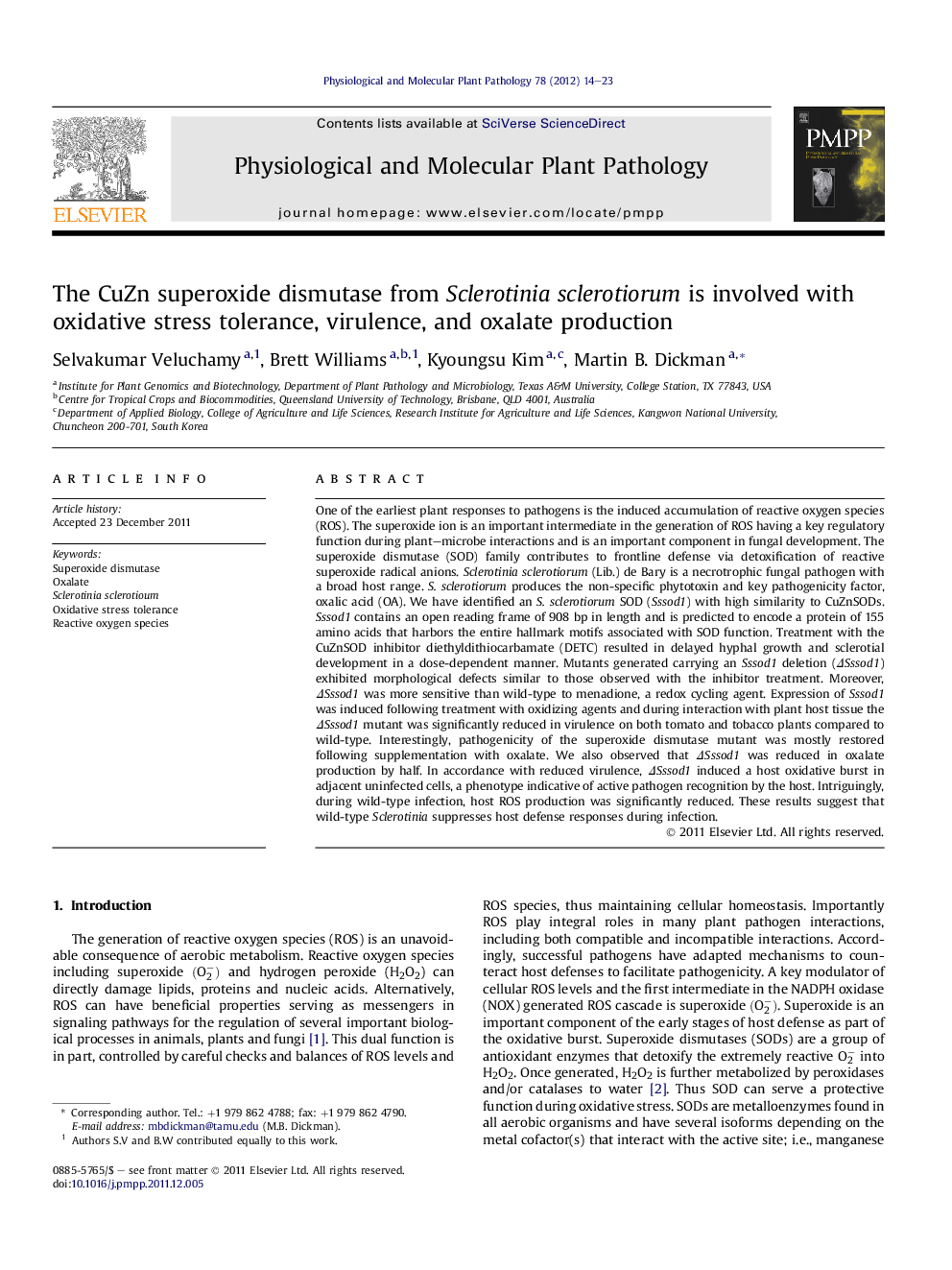| Article ID | Journal | Published Year | Pages | File Type |
|---|---|---|---|---|
| 2836456 | Physiological and Molecular Plant Pathology | 2012 | 10 Pages |
One of the earliest plant responses to pathogens is the induced accumulation of reactive oxygen species (ROS). The superoxide ion is an important intermediate in the generation of ROS having a key regulatory function during plant–microbe interactions and is an important component in fungal development. The superoxide dismutase (SOD) family contributes to frontline defense via detoxification of reactive superoxide radical anions. Sclerotinia sclerotiorum (Lib.) de Bary is a necrotrophic fungal pathogen with a broad host range. S. sclerotiorum produces the non-specific phytotoxin and key pathogenicity factor, oxalic acid (OA). We have identified an S. sclerotiorum SOD (Sssod1) with high similarity to CuZnSODs. Sssod1 contains an open reading frame of 908 bp in length and is predicted to encode a protein of 155 amino acids that harbors the entire hallmark motifs associated with SOD function. Treatment with the CuZnSOD inhibitor diethyldithiocarbamate (DETC) resulted in delayed hyphal growth and sclerotial development in a dose-dependent manner. Mutants generated carrying an Sssod1 deletion (ΔSssod1) exhibited morphological defects similar to those observed with the inhibitor treatment. Moreover, ΔSssod1 was more sensitive than wild-type to menadione, a redox cycling agent. Expression of Sssod1 was induced following treatment with oxidizing agents and during interaction with plant host tissue the ΔSssod1 mutant was significantly reduced in virulence on both tomato and tobacco plants compared to wild-type. Interestingly, pathogenicity of the superoxide dismutase mutant was mostly restored following supplementation with oxalate. We also observed that ΔSssod1 was reduced in oxalate production by half. In accordance with reduced virulence, ΔSssod1 induced a host oxidative burst in adjacent uninfected cells, a phenotype indicative of active pathogen recognition by the host. Intriguingly, during wild-type infection, host ROS production was significantly reduced. These results suggest that wild-type Sclerotinia suppresses host defense responses during infection.
► Sclerotinia sclerotiorum SOD mutants (ΔSssod1) have compromised oxidative stress tolerance. ► Sclerotial development is hindered in the ΔSssod1. ► ΔSssod1 have reduced virulence. ► ΔSssod1 produces half the amount of oxalate. ► The plant host is able to mount an oxidative burst in response to ΔSssod1 challenge.
